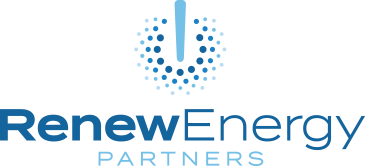The Blog
21 Ways to Save: Energy, Carbon, and Operating Expenses
Saving energy, carbon, and operating expenses takes multiple solutions.
RENEW Energy Partners specializes in funding energy saving retrofits for your commercial, industrial, and institutional buildings. A Master Service Agreement is the key to lowering energy, carbon and operating expenses as it allows us to provide and support various technologies to make your buildings more efficient and cut down on your energy costs.
The Low Hanging Fruit For Energy Savings
- LED Lighting – Light-emitting diode (LED) is a type of lighting that consumes less energy and is longer-lasting than older options. The bulbs can be used in many different lighting types and are a great way to increase your energy efficiency. Lighting projects can save significant amounts of energy and are a great investment. (LED Lighting)
- Lighting Controls – These systems switch your lighting fixtures on and off when in use or not in use, and by keeping the lights off when nobody is in a space, they help decrease energy usage. The different types of lighting controls are dimmers; motion, occupancy, and photosensors; and timers. LED technology has reduced the amount of energy that lights use to a point where controls are the next gateway to energy savings. Some states now require controls to be a part of the lighting retrofit to receive incentives. (Lighting Controls)
- Variable Frequency Drives – Electric motors were initially designed to be binary, either on or off. Variable Frequency Drives or adjustable speed drives allows the motor speed to match demand. The motor is then able to operate much more efficiently. (Variable Frequency Drives)
- Water Conservation – RENEW can fund projects as unique as hundreds of low flow toilets or the Internet of Things (IOT) water conservation programs. RENEW’s service agreement can also fund water-saving irrigation and management strategies.
- Demand Response – Energy Demand Charges (which are part of each bill and often are linked to the building’s demand on the grid at the peak use periods of the year) can make up 50% of a building’s energy bill. RENEW partners with the leading demand response providers to integrate active and passive demand response programs into all of our projects when applicable. (Demand Response)
- Retro-commissioning – Retro-commissioning Involves analyzing preexisting energy infrastructure and providing suggestions and alternative equipment to update it and increase its efficiency. (Retro-Commissioning: Significant Savings at Minimal Cost)
Large Scale Energy and Operating Solutions: Bringing the Power: Distributed Energy Resources
- Microgrids – Microgrids provide sustainable and resilient energy. The traditional electric grid brings energy to buildings from a single power source. By contrast, a microgrid is a small energy production and distribution system for a discrete set of buildings. Microgrids are usually designed to be connected to the grid and can become independent of it to function on their own. In this way, a microgrid provides full energy independence and resilience when the grid becomes damaged. RENEW’s Microgrids are designed to meet each site or campus energy requirements with lower carbon emissions than the grid and have included cogeneration (combined heat and power), generators, batteries, and/or renewable energy. (How Microgrids Work)
- Solar Photovoltaic – Solar PV or solar energy is a great solution to capture the sun’s energy and power your facility. It is renewable, can power buildings, connect to the grid, and solar modules can be placed practically anywhere with access to sunlight. (Energy 101: Solar PV)
- Battery Energy Storage – Battery Energy Storage Systems use thermal, electro-mechanical, or electro-chemical solutions to accumulate energy. These systems are installed in conjunction with on-site power generation such as solar or cogeneration, or as part of a microgrid, to store energy produced in excess of the site’s demand and then use (or “dispatch”) it later to meet some or all of a building’s energy needs. The energy can then be deployed to help lower peak energy use or used for resilience when the main grid goes down. (Battery Energy Storage System)
- Thermal Energy Storage (Viking Cold) – Viking Cold’s unique phase change material allows cold storage facility (think refrigerated warehouses) to store energy during low-cost times of the day and then use that stored energy for cooling when costs are high. The system provides better temperature control and lowers peak energy use. (Thermal Energy Storage)
- Combined Heat and Power – CHP, cogeneration, or distributed generation generate two or more energy sources from a single source. Cogeneration plants have efficiencies in the 50 to 70 percent range. In layman terms, this typically involves generating electricity and capturing and using the waste product – thermal energy. Until the renewable energy powers the utility grid, these systems reduce a building or campus’s carbon footprint. (Combined Heat and Power Basics)
- Fuel Cells – Fuel cells consist of an electrolyte encompassed on either side by a negative and positive electrode. A fuel cell works by using the chemical energy of the fuel it is given to create electricity. It can be used to power a multitude of structures. (Fuel Cells)
Fleet Solutions
- ENOW Energy – Has developed the first and only solar and battery-powered refrigerated trailer. With over 40,000 trailers built every year and a separate diesel engine powering each one’s refrigeration units, the ENOW solution provides significant carbon and fuel savings. (ENOW Energy)
Deep Energy Efficiency and Industry Solutions
- Daylighting – (Daylighting)
- Building Management Systems –(Building Management System)
- High-efficiency Air compressors – (Air Compressors)
- High Efficiency Boilers and boiler plants –(Furnaces and Boilers)
- Steam Trap Upgrades –. (Steam Trap)
- High-efficiency electric motors – (Electric Motor)
- Vending Misers (Energy Miser)
- Submetering (Better Buildings Submetering)
Renew Energy Partners provides turnkey solutions for funding, installing, and managing energy efficiency and on-site clean power generation projects. We help building owners reduce their energy usage, carbon footprint, and operating expenses while making their buildings cleaner, nicer, and more resilient. With RENEW’s energy-as-a-service model, energy saving retrofits and power upgrades are funded by future savings and are at no cost to the building owner. For more information on our services, contact us today.



